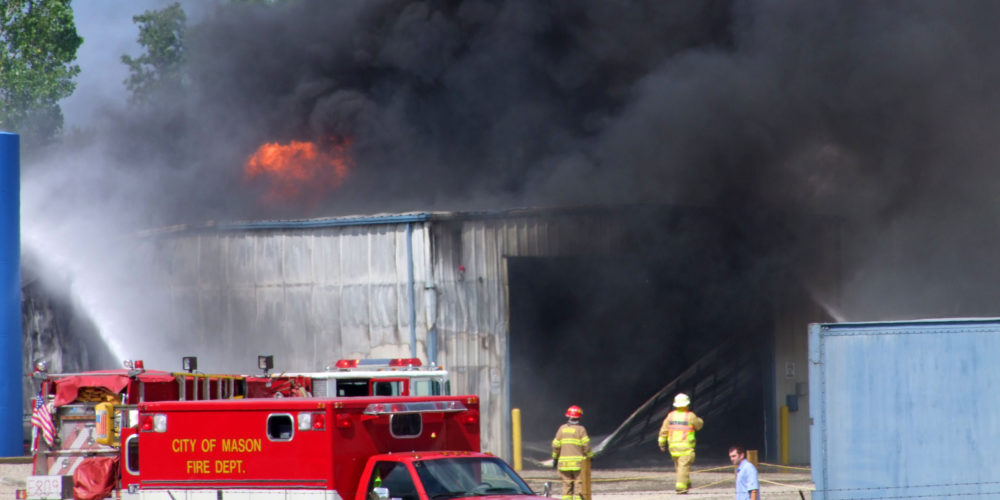Last week was just chock full of setbacks and assaults on our public protections coming out of Washington. You’ve probably heard about President Trump’s all-out attack on climate policy; EPA Administrator Pruitt got right on it. No surprise there. Then there was EPA’s decision not to ban a pesticide clearly linked to serious and long-term developmental effects on children’s brains and cognitive function. But you may not have noticed another harmful decision coming out of the EPA – this one about its Risk Management Program (RMP) rule.
Maybe you have been fortunate enough NOT to have to worry about an explosion, fire, or leak from the over 12,000 facilities that use or store toxic chemicals in the U.S. But many of our families and communities—especially communities of color or low income communities — are not so lucky.
In the last decade nearly 60 people died, approximately 17,000 people were injured or sought medical treatment, and almost 500,000 people were evacuated or sheltered-in-place as a result of accidental releases at chemical plants. Over the past 10 years, more than 1,500 incidents were reported causing over $2 billion in property damage. According to whom? The EPA. And these data don’t begin to capture the daily worry and anxiety of those living or working close to one of those facilities.
One would think that enhancing safeguards to prevent, prepare for, respond to, and manage risks of chemical accidents and releases from our nation’s most hazardous facilities would be a no brainer. It’s not like we haven’t seen or read about catastrophic chemical incidents. Like the Chevron Richmond Refinery fire in 2012 that sent 15,000 people to the hospital for emergency treatment. Or the deadly explosion at the West Fertilizer Company in West, Texas in 2013 that killed 15 people and injured 200 more. Or the 2014 chemical spill in West Virginia that left thousands of residents and businesses without clean water.
I suspect the American public assumes our government views reducing the risk of chemical disasters as a critical priority. And it was making some progress.
The good
For years, community groups, environmental organizations, and labor groups had pressed and petitioned the federal government to adopt stronger measures to prevent chemical disasters. Finally, and in the wake of several high profile incidents, President Obama issued an Executive Order (EO 13650) in 2013 directing the federal agencies to reduce risks associated with such incidents and to enhance the safety of chemical facilities. Updating EPA’s Risk Management Program rule (under the Clean Air Act’s chemical disaster provision) emerged as one of the top priorities for improving the safety of these facilities. The EPA then embarked on a multi-year and rigorous process of public outreach, stakeholder engagement, formal requests for information, and notice and comment periods. The outcome: an updated Risk Management Program rule that includes some common-sense provisions for covered facilities. For example,
- Investigating incidents that resulted in or could have resulted in a catastrophic release
(a so-called “near miss”), including a root cause analysis;
- Coordinating local emergency response plans, roles, and responsibilities, and conducting emergency response exercises;
- Improving public access to chemical hazard information;
- Engaging an independent third-party after a reportable accident to audit compliance; and
- For three industries with the most serious accident records (oil refineries, chemical manufacturers, and pulp and paper mills), conducting a safer technology and alternative analysis to identify and evaluate measures that could prevent disasters.
The enhanced rule was scheduled to go into effect on March 14, 2017, with longer compliance periods for some provisions (as far out as 2022).
The bad
In March, the EPA issued a 90 day administrative stay – delaying implementation of the rule to June 19, 2017. This followed receipt of petitions by industry groups and several states requesting reconsideration of the rule. Who were these petitioners? Some pretty powerful stakeholders. The RMP Coalition whose members are … wait for it… the American Chemistry Council, the American Forest & Paper Association, the American Fuel & Petrochemical Manufacturers, the American Petroleum Institute, the U.S. Chamber of Commerce, the National Association of Manufacturers, and the Utility Air Regulatory Group. Another petition came in from the Chemical Safety Advocacy Group (CSAG) – comprised of companies in the refining, oil, and gas, chemicals, and general manufacturing sectors. Then came a third petition from 11 states, including Texas and West Virginia.
The ugly
Stay it again. Attentive to these industrial interests, Mr. Pruitt’s EPA last week proposed a further delay to the effective date of the RMP amendments to February 19, 2019. So, having waited years for enhanced chemical safety and security safeguards, and after an already lengthy and extensive public process required for rule-making, communities and families at risk of chemical disasters will now have to wait almost another two years while the agency reviews and reconsiders the Risk Management Program amendments. This delay essentially buys the agency more time to figure out how to redo it or repeal it completely. Call me crazy, but I just don’t see the delay resulting in a rule that gets stronger and further strengthens public safety. The regulated community doesn’t want that to happen, and they have a bigger war chest and easier access to regulators and decision makers than public interest community does.
Unleashing the power of the (little) people
But here’s what we, the people, do have. We have voice. We have votes. We have on-the-ground stories to tell. We also have local leaders, emergency responders, workers, and school teachers who can attest to the dangers and the need.
The EPA is holding a public hearing as part of its reconsideration on April 19, 2017 in Washington, DC. And it is taking written comments until May 19, 2017. No comment or story is too short or too unimportant to tell. And EPA has to consider all comments as it fashions its response. Tell them a further delay is dangerous, unnecessary, and unconscionable.
You can submit written comments electronically to Docket ID No. EPA-HQ-OEM-2015-0725 at http://www.regulations.gov. These written comments can be accompanied by multi-media submissions, (i.e., video, audio, photos — like maybe of your kids?). While you’re at it, send a copy of your comments to your federal representatives to let them know that you expect their support for strong chemical safety rules and resistance to any effort to roll-back these and other public protections.
One of the facilities in question may be in your neighborhood – or near those you love. You might not even know. But even if you’re fortunate enough to be some distance away and relatively safe from a chemical explosion, fire, or spill disaster, we all have a stake in public safety and health. And know that UCS will be there with you.

